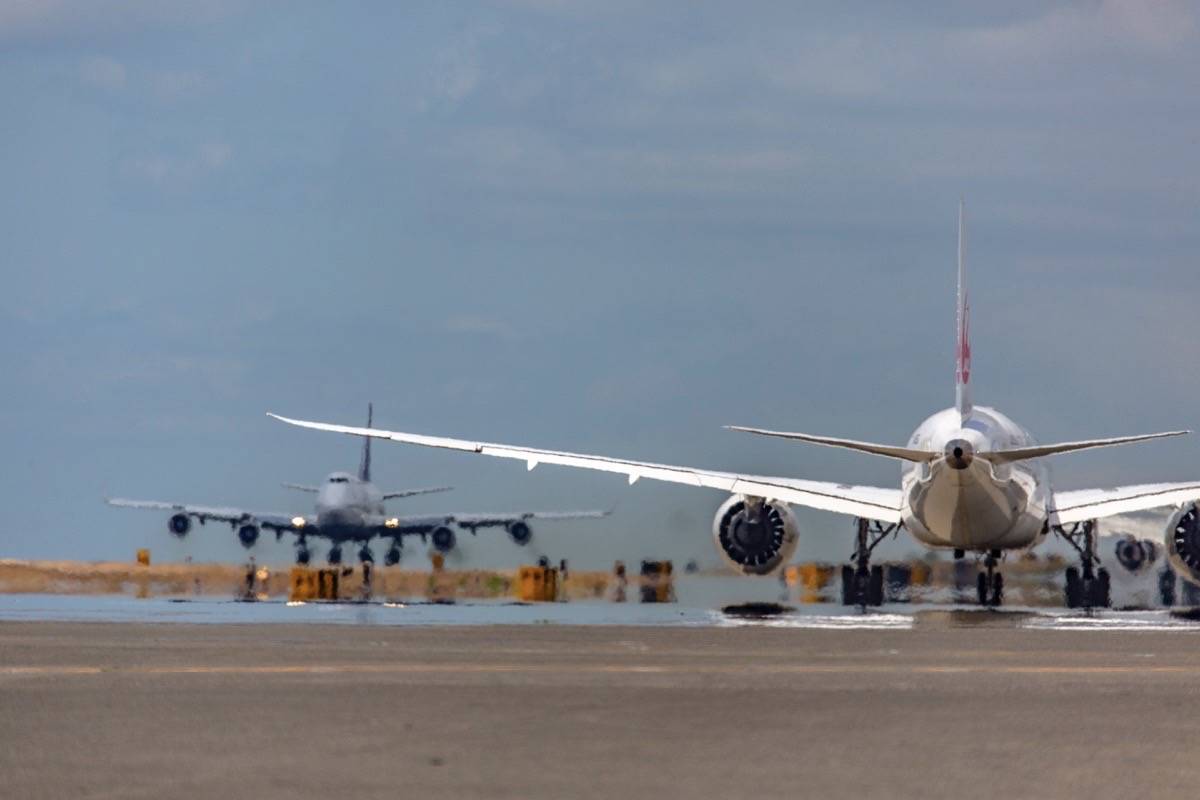You’ve just landed at Seattle-Tacoma International Airport (SEA) after flying for what seems like an eternity. Your plane begins to taxi from the runway to the terminal, and you’re ready to stretch your legs and head off the plane. Then, after taxiing past the runways, your plane stops and the captain comes over the speaker saying it’s going to be a few minutes until the plane can get to its gate.
You’re ready to be off the plane. What is going on?
There are several reasons this can happen at any airport, especially a fast-growing one like SEA. Airlines create their schedules with optimistic operating scenarios in mind — weather, staffing, no mechanical delays — and since airports cannot regulate the timing or number of planes scheduled, everybody works to support the most harmonious and safe daily operation.
Here are the top four reasons it can take longer than expected to taxi to your gate after landing.
1. There is a plane at your gate
SEA is the eighth busiest airport in the country, so most gates have little downtime. Every year, each airline is annually assigned a number of leased gates based on their passenger traffic. Your airline plans how it will use its gates at the airport in advance according to their schedule. Of course, the unexpected is always expected, like planes arriving early or pushing back from gates late.
Why can’t my plane just use another gate, you may ask? That’s sometimes possible but it becomes especially challenging during peak periods. For example, between 8:00 p.m. and 10:00 p.m. is a rush hour period across the airport due to nearly 150 planes departing and arriving. This is compounded by the fact that many gates become occupied with planes that rest overnight for operation first thing in the morning (what we call RON – Remain Over Night). So, finding an open gate alternative becomes complicated.
You might even look out the window and see an open gate in a different area of the airport, but those gates are likely used by other airlines. In a pinch, they could be used but your airline typically prefers to arrive at one of its gates where they have ground crew, gate staff, equipment, and proximity to connecting flights.
2. There is no ground crew or staff available
To bring a plane into the gate, your airline needs several positions filled: three people with the orange sticks to marshal the plane in, ground crew for baggage handling and other operations, a person to move the jet bridge into place, and a customer service representative or two to meet your flight in the terminal. Sometimes, airline staff scheduled for your flight’s arrival can be momentarily tied up with another plane or on the way to your gate area. Rest assured that your airline knows you’re coming in and is moving as quickly as they can to get you off the plane.
3. A game of airport Tetris is unfolding
As the greater Seattle and Puget Sound region has grown, SEA has become the eighth busiest airport in the country. Our airport is a hub for two top U.S.-based carriers — Alaska Airlines and Delta Air Lines — and in total we see around 1,300 daily aircraft departures and arrivals (or operations). As airlines increase the number of flights, the airport works to support swift movement between runway and gate despite our smaller footprint compared to other similarly busy airports. In addition, the gate location and the direction the wind is blowing also determine which side of the airport planes are departing and landing.
Because of these factors, it can take longer than expected as the air traffic control tower (runway and air space) and ramp tower (terminal area) essentially play a complex game of Tetris with planes on the ground. They’re very skilled and need to evaluate near-constant motion as they make decisions. During peak periods there can be lots of traffic as planes push back from gates into taxi lanes (slowing other push backs), cross active runways going to and from the terminal, and taxi to the opposite side of the airport after landing.
4. Fair weather conditions prevail
What? Did you know that Seattle’s cloudy weather can actually make airport traffic more efficient? You may notice that sometimes you land from the north over Seattle and sometimes from the south over Tacoma. This depends upon local wind conditions. And in bad weather, SEA and King County International Airport just north of us must alternate landings and takeoffs. Also, when planes are landing in a south flow over Seattle (during low visibility), it generally speeds ground movement as the departure taxi lane on the north side of the airport is longer and farther from the active traffic area near the terminal.
We know that you’re ready to be off the plane and relaxing at your final destination. So, rest assured that the airport and our airline partners are doing everything we can to speed your flight. It’s also why we’ve started ground boarding to reduce wait times on the ground and have $3.7 billion in active projects that will improve your airport experience and increase airport capacity.


